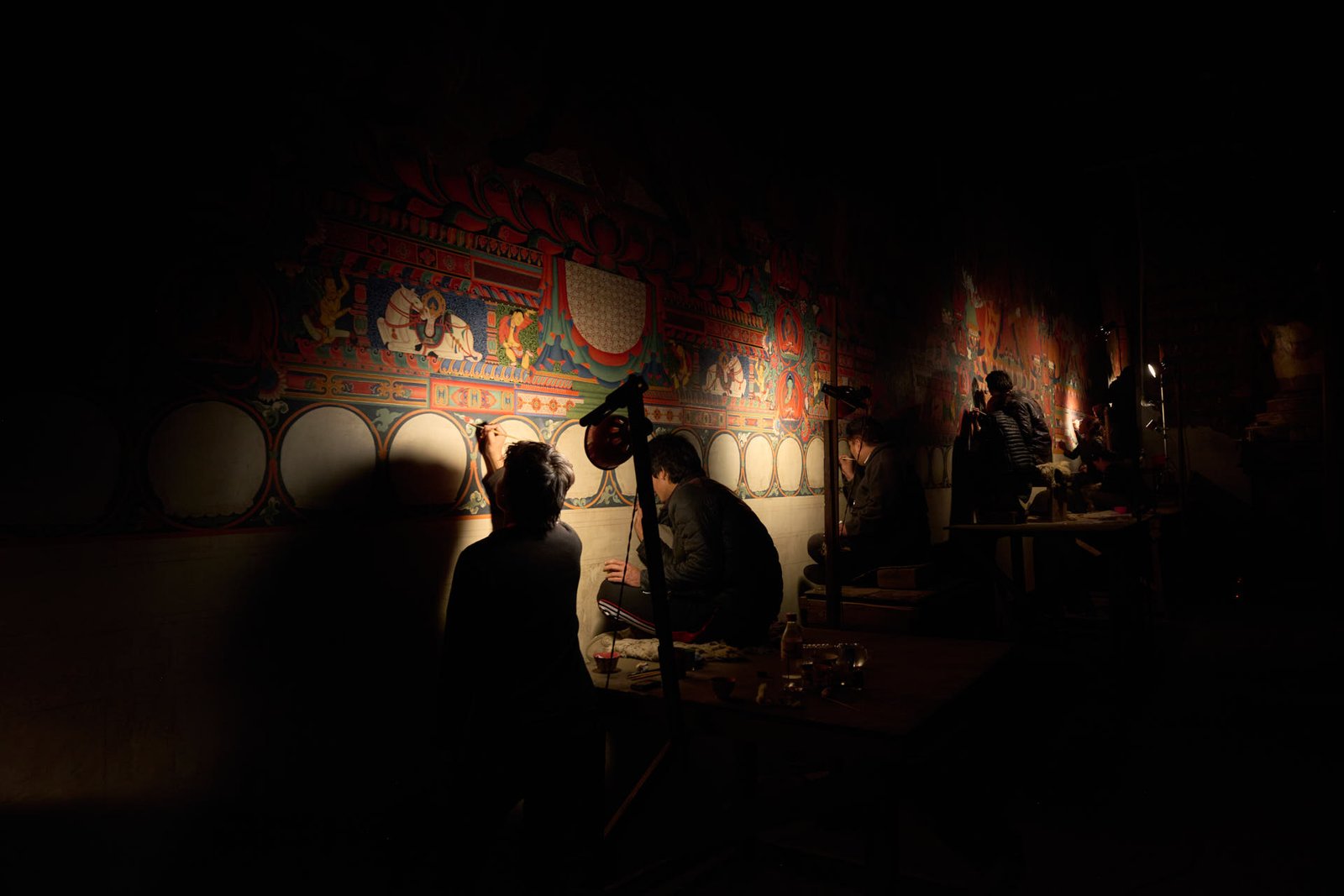grinding stones
Thanks to chemical analysis for the identification of the pigments found in Thupchen that were carried out back in 2000 it was possible to know which pigments were actually used to paint the monastery. The Pigments we took were handcrafted the traditional way by the local team. Selected semi-precious stones were bought from different parts of Asia and initially crashed with hammers in specific stone-based mortars. When the grain size was small enough, the pigments were then mixed in ceramic-based mortars and ground into a very fine powder. The grinding process would take 3 to 6 weeks in order to have the finest grain size and to produce the brightest colors.
applying base colors
“Lefranc Retoucher Surfin extra fine retouching varnish” was used as binder, an acrylic polymer used in conservation that would prevent issues with mold and humidity. The glue was diluted in Commercial Thinner according to the amount each pigment required. The pigments were applied to the areas to be painted in order to have a color purposely lighter than the original. This coloring process was aimed at covering completely the white background to avoid tricks of the eye triggered by the excess of reflected light from the white. It is much more challenging to try to make the same colors of the old wall paintings when the dominant color is white. By applying a lighter color and by covering the whole white plaster it would have been easier later on to match the original colors.
toning down colors
This task was meant to darken the new colors so as to match the XV century ones once all the white background of the plaster had been covered. The darkening of base colors was carried out through watercolors applied with a technique called veiling, where subsequent coatings of semi-transparent paint end up toning down a hue.







































